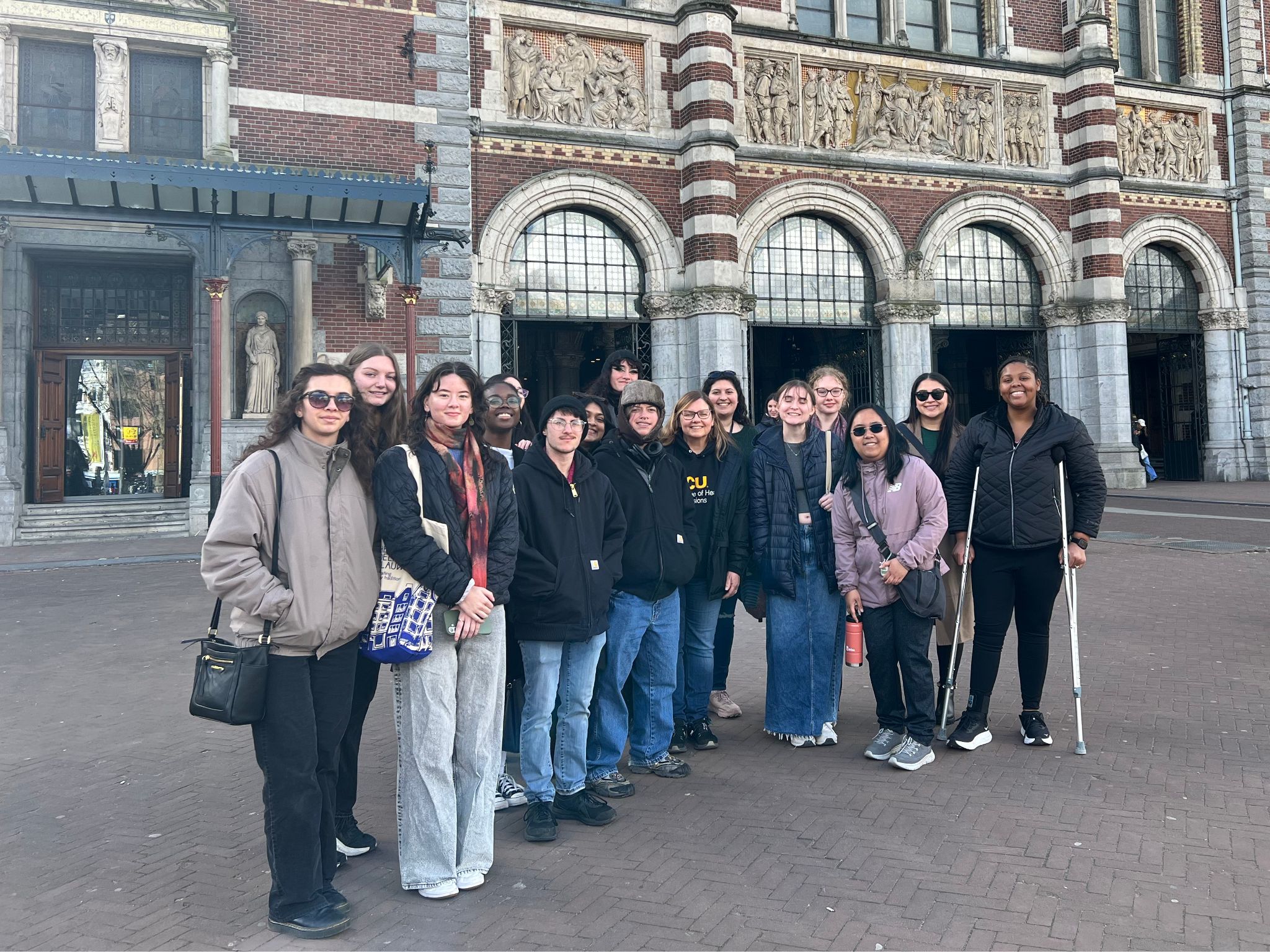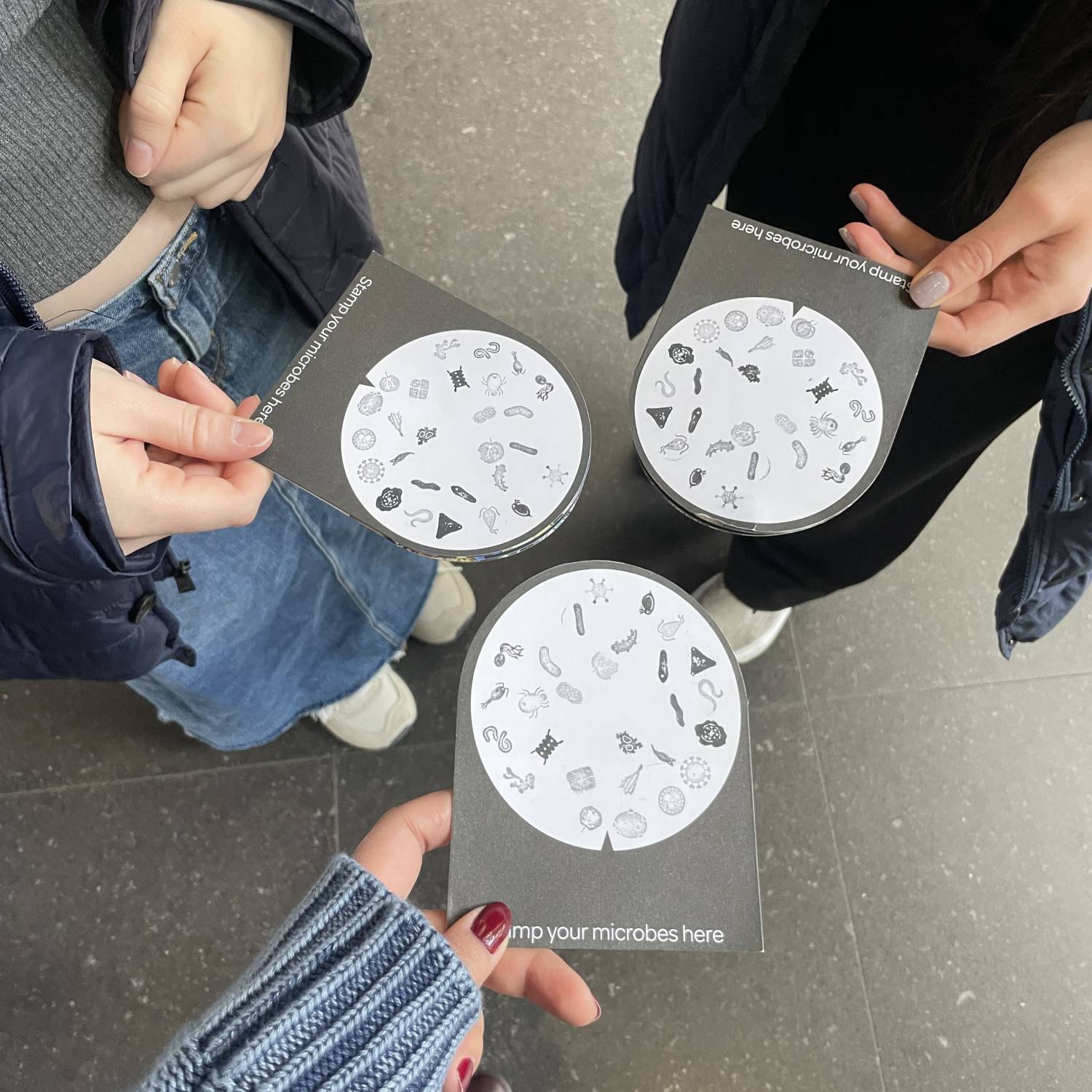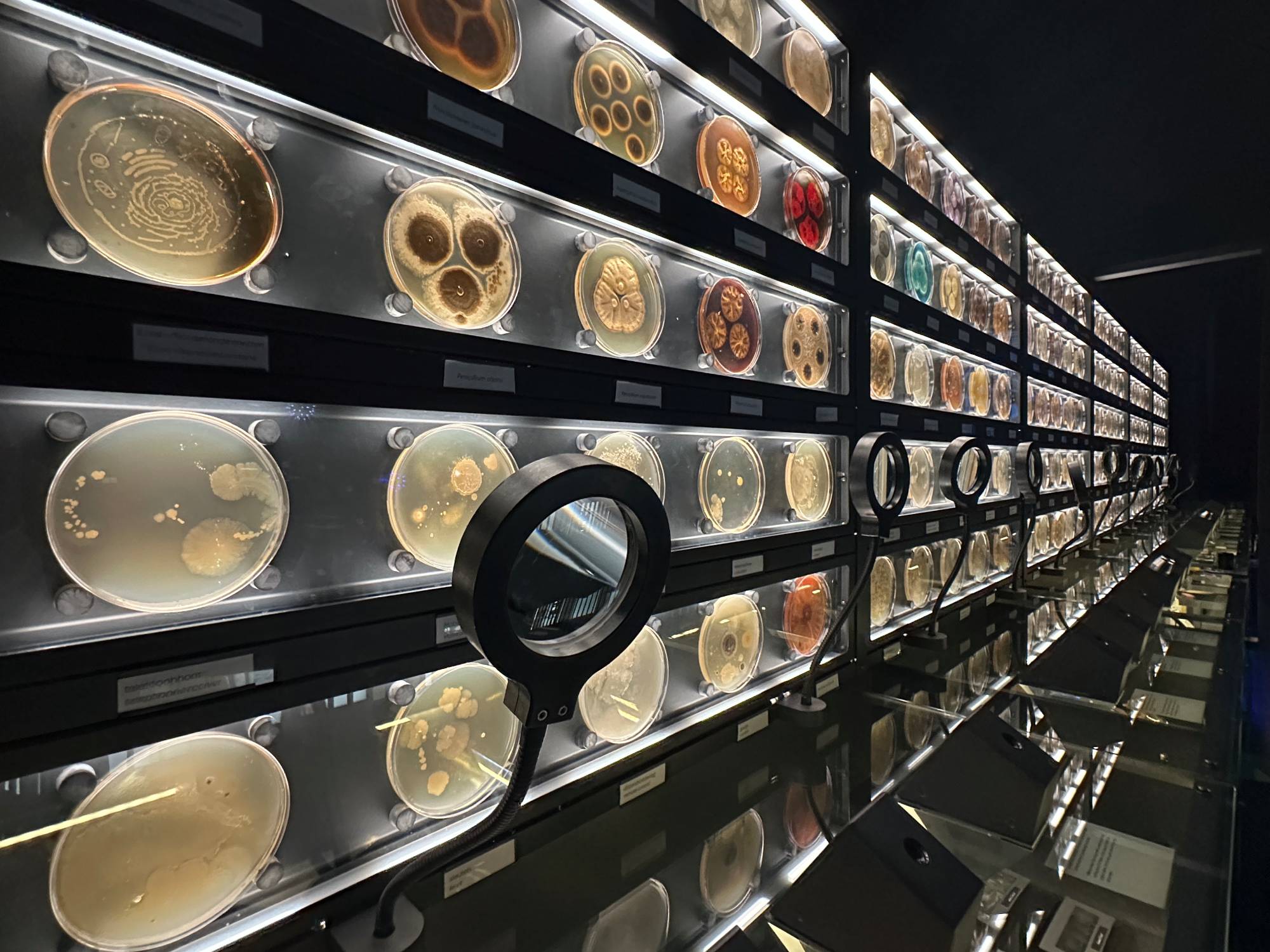MLS students explore microbes and the larger human body
Maiya Picott fondly recalls the impact a semester in Switzerland had on her as an undergraduate. Enrolled in an interdisciplinary program, she traveled throughout Europe but missed visiting a microbe museum in Amsterdam – an experience she promised herself she’d return for.

That became a highlight of the weeklong trip for the 15 Medical Laboratory Sciences students she led. Academic elements were designed to take them outside the lab and show them how their chosen career contributes to the world of health care, with a focus on applying laboratory sciences in real-world contexts.
“I want them to realize that the lessons they’re learning in the classroom are applicable in the real world,” said Picott, M.S., laboratory instructor.
Micropia, the world’s first museum dedicated to microbes, explores the smallest and most powerful organisms on Earth – critical to digestion, infections, and even fueling the body. These are the very subjects students will test for and analyze as laboratory professionals.
At Body Worlds, students discovered the intricacies beneath the skin through real human specimens called plastinates. The exhibition showcased human health and function, demonstrating how emotions affect the body and which anatomical parts contribute to feelings of happiness.
“As students prepare to enter the workforce, this shows them the bigger picture: who we are and how everything is connected in health care,” Picott said.
For senior Rachel Coblentz, one highlight included an anatomy exhibit that showed different organs and body systems in various stages, and she called out the progression of a spleen from healthy to diseased. “In lab sciences we are not patient facing, but are still taught about clinical presentations of diseases such as splenomegaly in leukemia patients,” she said. “This exhibit helped me contextualize the information we've learned and affirm the importance of laboratory testing to identify and help treat patients.”
Many of the students were in their final semester and had already received job offers after graduation. This trip provided an opportunity to cap their academic careers with engaging, hands-on learning – without the stress of taking a test afterward.
The group included students traveling outside the United States for the first time, offering them a broader cultural experience. During the week, they also toured the Rijksmuseum, which chronicles Dutch history since the Middle Ages, the Anne Frank House, and the Van Gogh Museum, home to the world’s largest collection of the artist’s paintings and drawings.
“The trip allowed me to better understand how Europe differs from the U.S.,” said Sarah El Abbar, a senior. “It was an important experience to have while still in college.”

Experiences like Micropia and Body Worlds used innovative techniques to make learning about science accessible for all audiences. In particular, a “kissing booth” at Micropia allowed visitors to create silhouettes with their friends.
Then, the feature “went on to explain how microbiology gets tangled into these very normal, routine actions. It started to explain the differences in microbiological make-up between different sexes and how that affects the kissing experiences as well as what to ensure we aren’t passing around,” said Aarushi Patel, another Class of 2025 member. “It was fun and had people excited to engage in this learning experience.”